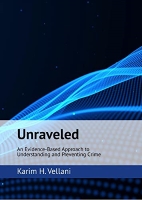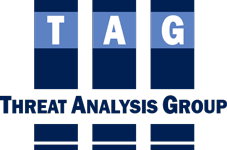
The following is from Unraveled: An Evidence-Based Approach to Understanding and Preventing Crime
Amazon (Paperback) Amazon (Kindle) Apple Barnes & Noble Google
What are the most commonly mixed up security terms? Threat, vulnerability, and risk.
While it might be unreasonable to expect those outside the security industry to understand the differences, more often than not, many in the business use these terms incorrectly or interchangeably. Maybe some definitions (from Strategic Security Management) might help….
Asset – People, property, and information. People may include employees and customers along with other invited persons such as contractors or guests. Property assets consist of both tangible and intangible items that can be assigned a value. Intangible assets include reputation and proprietary information. Information may include databases, software code, critical company records, and many other intangible items.
An asset is what we’re trying to protect.
Threat – Anything that can exploit a vulnerability, intentionally or accidentally, and obtain, damage, or destroy an asset.
A threat is what we’re trying to protect against.
Vulnerability – Weaknesses or gaps in a security program that can be exploited by threats to gain unauthorized access to an asset.
A vulnerability is a weakness or gap in our protection efforts.
Risk – The potential for loss, damage or destruction of an asset as a result of a threat exploiting a vulnerability.
Risk is the intersection of assets, threats, and vulnerabilities.
Why is it important to understand the difference between these terms? If you don’t understand the difference, you’ll never understand the true risk to assets. You see, when conducting a risk assessment, the formula used to determine risk is….
A + T + V = R
That is, Asset + Threat + Vulnerability = Risk.
Risk is a function of threats exploiting vulnerabilities to obtain, damage or destroy assets. Thus, threats (actual, conceptual, or inherent) may exist, but if there are no vulnerabilities then there is little/no risk. Similarly, you can have a vulnerability, but if you have no threat, then you have little/no risk.
Accurately assessing threats and identifying vulnerabilities is critical to understanding the risk to assets. Understanding the difference between threats, vulnerabilities, and risk is the first step.
Read more from Unraveled: An Evidence-Based Approach to Understanding and Preventing Crime
Amazon (Hardcover): https://www.amazon.com/dp/B09M544HHV
Amazon (Paperback): https://www.amazon.com/dp/B09QNYN7SQ
Amazon (Kindle): https://www.amazon.com/dp/B09PMP8V82
Apple: https://books.apple.com/us/book/id1601745187
Google: https://play.google.com/store/books/details/Karim_H_Vellani_Unraveled?id=eTZQEAAAQBAJ
Barnes & Noble: https://www.barnesandnoble.com/w/unraveled-karim-vellani/1140811714

